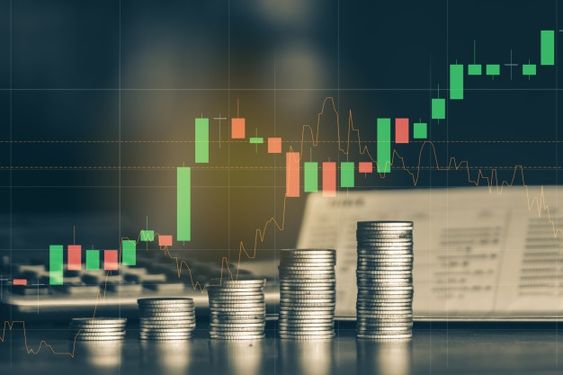Advance strategies in forex trading
A forex trading strategy is a method that a forex trader uses to decide whether to buy or sell a currency pair at any particular time.
Technical analysis or fundamental, news-based events might be used to develop forex trading techniques. Trading signals are used to trigger buy or sell decisions in a trader’s currency trading strategy. Trading techniques for forex can be found on the internet or developed by traders themselves.
Fundamentals of Forex Trading Strategy
For creating trading signals, forex trading strategies can be either manual or automated. In manual trading systems, a trader sits in front of a computer screen, looking for trading signals and deciding whether to buy or sell. A trader creates an algorithm that discovers trading signals and performs deals on its own in automated systems. Human emotion is removed from the equation in the latter systems, which may boost performance.
When buying off-the-shelf forex trading techniques, traders should be cautious because it is difficult to evaluate their track record, and many successful trading systems are kept hidden.
An effective forex trading strategy is made up of several different elements:
- Choosing a market
Traders must decide which currency pairings they will trade and become specialists at reading them.
- Position sizing
Traders must establish the size of each position to manage the amount of risk involved in each trade.
- Trading strategies
Traders should have a set of rules for buying and selling currency pairs, including which execution technology to use.
- Entry points
Traders must set guidelines for when to enter a long or short position in a particular currency pair.
- Exit points
Traders must define guidelines for exiting a long or short position, as well as when to exit a losing position.
Effective Forex Trading Strategies
There are many profitable forex trading techniques, but not all of them are appropriate for every trader. Choose a method that works best for you, taking into account your available time, personality type, and risk tolerance. These are listed below in order of the typical time commitment, which ranges from short to long.
Scalping
Scalping is a short-term trading method that involves taking several tiny profits on short-term trading positions. Scalpers require lightning-fast reaction speeds because they typically initiate and exit transactions in a matter of seconds or minutes. This is an extremely fast-paced and demanding activity that may not be suitable for everyone.
Scalpers are also looking for patterns in price charts that can help them predict future exchange rate fluctuations. They usually analyze with very short-term tick charts like the one displayed below for EUR/USD. Scalpers like brokers with narrow spreads, guaranteed order executions, and little or no order slippage.
Day trading
Another short-term trading strategy is day trading, which is done exclusively during a specific trading session. Day traders do not often hold positions overnight, thus they close off all trades each day. When a trader is not paying attention to the market, this helps to decrease exposure to market swings.
The majority of day traders employ trading strategies based on technical analysis of intraday price activity on short-term charts. There are numerous day trading tactics available, but breakout trading is one of the most popular. Trades are initiated when the exchange rate for a currency pair moves beyond a certain level on the chart, and they are verified when volume increases.
News trading
News trading strategies are probably not suitable for forex newbies. These techniques can be based on both fundamental and technical research, and they usually benefit from the significant volatility that occurs in the forex market right after major news releases.
Economic calendars are frequently used by news traders to keep track of important data releases. They then actively monitor the market before the event to identify critical support and resistance levels so that they can respond swiftly based on the outcomes. When managing currency positions in such quick markets, news traders must maintain rigorous discipline and frequently set stop-loss and take-profit orders in the market.
Swing or momentum trading
Swing trading, or momentum trading, is a medium-term trading strategy that tries to capture greater market moves. Swing traders do this by trading both with and against significant trends when the market corrects, therefore they should be willing to hold overnight positions.
Swing traders prefer to use momentum indicators to initiate and exit positions. Traders use them to identify markets that are overbought or oversold, which they can sell or purchase. Swing traders may also purchase ahead of support or sell ahead of resistance levels that form on the charts of a currency pair’s exchange rate.
Trend trading
Swing trading, or momentum trading, is a medium-term trading strategy that tries to capture greater market moves. Swing traders do this by trading both with and against significant trends when the market corrects, therefore they should be willing to hold overnight positions.
Swing traders prefer to use momentum indicators to initiate and exit positions. Traders use them to identify markets that are overbought or oversold, which they can sell or purchase. Swing traders may also purchase ahead of support or sell ahead of resistance levels that form on the charts of a currency pair’s exchange rate.
Trading in the forex market without any strategies can give you hard time making a good profit for beginner traders. Making a good strategy according to your skills is a secret key to becoming a professional trader.If you want to learn more about the forex trading strategies and want to trade like a professional trader then you can enroll in the Capital varsity forex trading course where you will learn everything about the forex trading strategies one by one and on your own pace.

